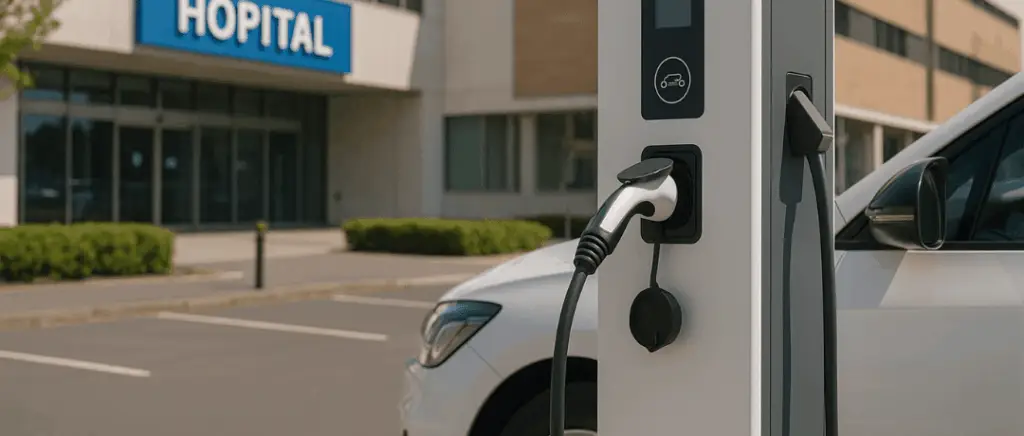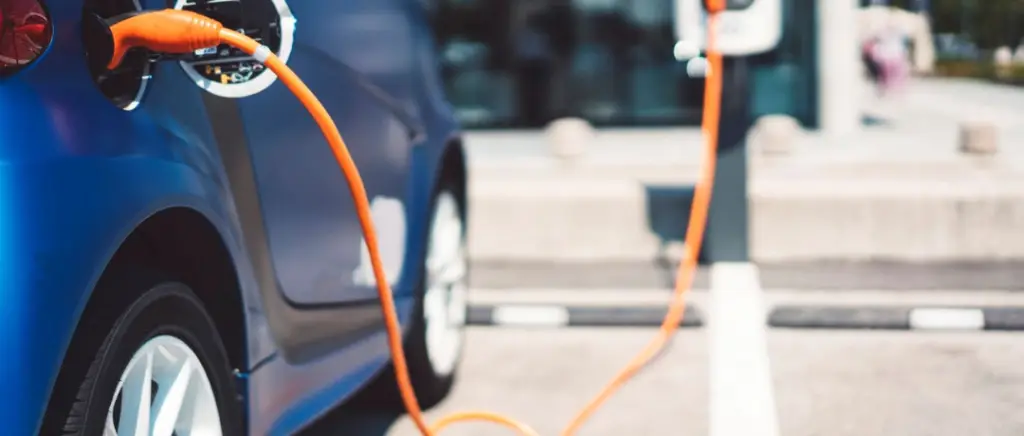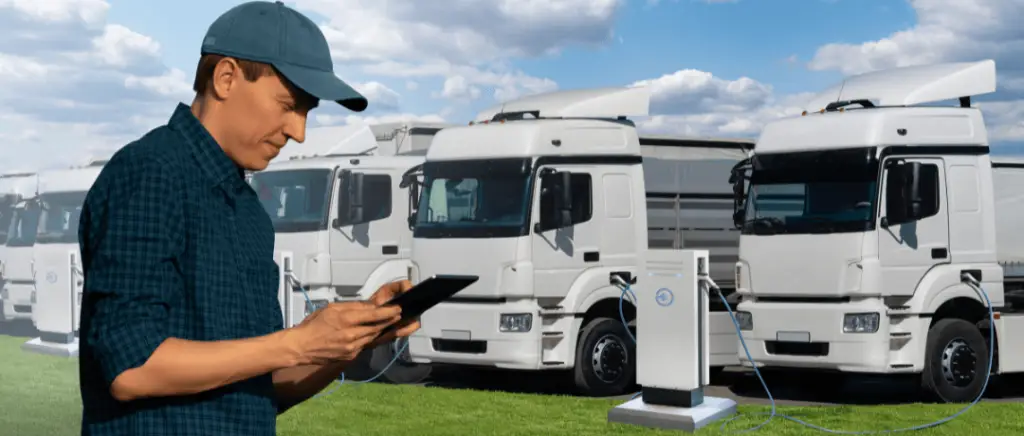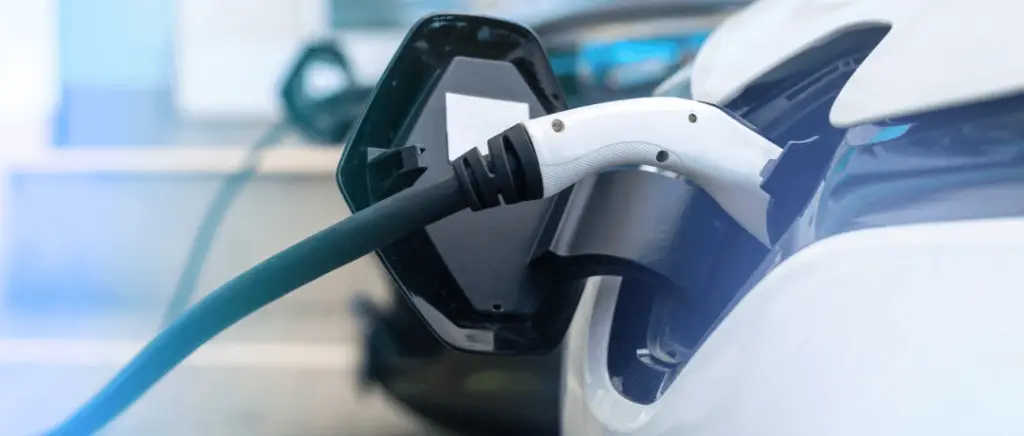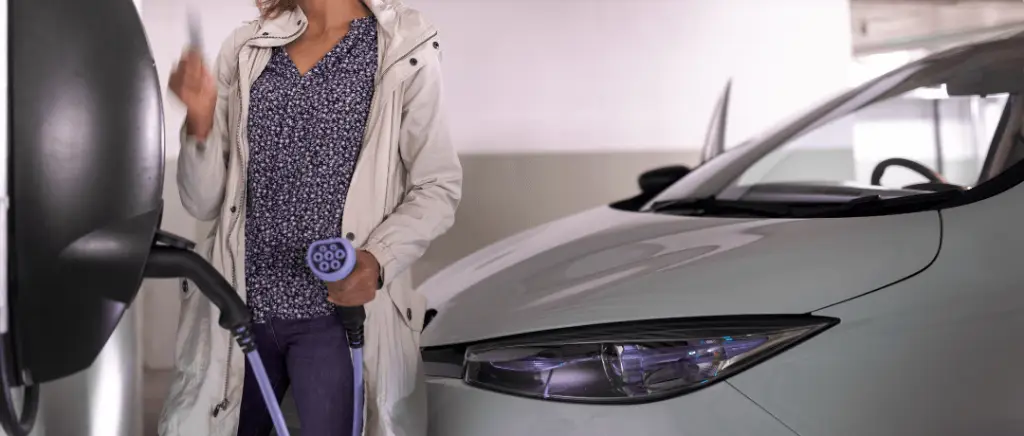Why install recharging points in a healthcare establishment?
Improving the welcome for patients, visitors and staff
Installing charging points for electric cars in a healthcare establishment is much more than a simple question of compliance: it's a tangible leverage to improve the welcome and experience of all people who walk through your doors. Today's event, about 250 recharging points are available on average for every 100,000 inhabitants in France (figures from June 2025), but demand is exploding, driven by the growth of electric vehicles and changing societal expectations.
For patients, the possibility of recharging their vehicle during a consultation or hospitalisation reduces the stress associated withautonomywhile offering them a modern service and practice. This extra comfort contributes to a more positive experienceAt a time when patient satisfaction is a key differentiating criterion for healthcare establishments.
For visitors, who often have to travel long distances or spend several hours with loved ones, access to a charging point is an undeniable asset. It keeps them connected and mobile, encouraging longer, more relaxed visits. According to one study, the presence of amenities such as charging stations increases visitor numbers and the time spent in the establishmentThis can also benefit ancillary services (cafeterias, shops, etc.).
For employees and medical staff, whose working hours are sometimes unpredictable, the on-site charging facilitates the transition to electric vehicles and supports the school's commitment to the environment. It also contributes to loyalty and thesite attractivenessThis is at a time when sustainable mobility is becoming an increasingly important HR argument.
As well as being practical, offering this service enhances the image of the establishment: 72 % of French people believe that a hospital or nursing home committed to the ecological transition inspires greater confidence. Installing recharging points means meeting a growing demand while at the same time demonstrating a responsible and innovative approach.
Reinforcing the image of a school committed to the ecological transition
Reinforcing the image of a healthcare establishment committed to the ecological transition is no longer just an asset: it has become a strong marker of responsibility and innovation for any hospital, clinic or EHPAD. Visit The health sector alone accounts for almost 8 % of national greenhouse gas emissions in France.. In view of this, every action in favour of sustainable mobility counts, and the installation of charging points for electric vehicles is a concrete and visible gesture.
See also our article :
By equipping your car parks with recharging stations, you are making a real impact on the environment. a clear commitment to the fight against climate change. This choice reduces thecarbon footprint in particular by encouraging the use of electric and hybrid vehicles. rechargeable hybridswhich generate far fewer pollutant emissions than traditional internal combustion engines. This This approach is fully in line with the Ministry of Health's ecological roadmapwhich makes mobility one of the priorities for reducing the sector's environmental impact.
Beyond the environmental impact, this initiative opens the door to concrete benefits:
- obtaining green financing,
- access to ecological certifications,
- the installation of recharging infrastructures,
- and grants or reduced-rate loans for energy renovation.
Visit 2023the plan for eco-responsible health has strengthened these incentivesThis will encourage establishments to speed up their transition.
Last but not least, installing charging stations will also enhance your establishment's reputation with patients, families, staff and the authorities.
According to theWorld Health Organisation (WHO)Eco-responsible establishments are perceived as more reliable and more attractive. By communicating your actions, you position your organisation as a pioneer in sustainable developmentinspiring trust and loyalty throughout your community.
Optimising the fleet of electric vehicles for internal or domestic travel
Having charging stations accessible on site makes it possible toensure the permanent availability of light medical vehicles, ambulances or liaison vehicles. After a patient has been transported over dozens or even hundreds of kilometres, the crucial for an ambulance to be able to recharge its battery quickly. battery before setting off on your mission.
According to Avere France, as previously stated, France has an average of 250 charging points per 100,000 inhabitants, but only 10 % are ultra-fast terminals, capable of recharging a vehicle from 20 % to 80 % in just 20 minutesA major asset for emergency services and homecare rounds.
For healthcare professionals, electric mobility offers an excellent an economical and ecological solution for regular journeys between sitesthe home visits or patient transfers. In other words, the installation of recharging points in the car park of the establishment simplifies schedule management and optimises the use of the electric fleet. This is also part of a modernisation and ecological commitmentsupported by the national plan for eco-responsible health and the law on the orientation of mobility (LOM Act), which is gradually requiring hospital car parks to be equipped with recharging facilities.
See also our article :
Managing a fleet of electric vehicles, whether ambulances, liaison vehicles or service cars, requires rigour, visibility and responsiveness. This is where the software fleet manager from Beev makes all the differenceby simplifying and professionalising the day-to-day management of your fleet.
See also our article :
The Beev Fleet Manager platform stands out for its intuitive interface you can add all your vehicles and drivers in just a few clicks, while at the same time providing essential information (model, mileage, length of contract, registration). All these data are centralised in clear dashboardsIt gives you an instant overview of the status of your fleet and charging stations.
One of the major advantages of Beev software is its real-time trackingyou can monitor the condition of your vehicles and terminals 24 hours a day, anticipate maintenance needs and optimising the use of infrastructure. This feature is particularly valuable for healthcare establishments, where the availability of vehicles is crucial to ensuring continuity of care, whether for internal travel or home visits.
See also our article :
What's more, the integrated calendar allows you to plan interviews easily, revisions and other important events, reducing downtime and associated costs. You also benefit from centralised documentation: contracts, maintenance histories, usage reports... everything is accessible in one place.
Beev Fleet Manager goes further by making it easier to calculate the TCO (Total Cost of Ownership), a key indicator for manage the profitability of your electric fleet. Thanks to a detailed analysis of costs (leasing, purchasing, maintenance, energy, etc.), you can make informed decisions to optimise your budget and reduce your establishment's carbon footprint.
Use the TCO simulator to calculate the total cost of ownership of your car and compare it with its internal combustion equivalent.
What are the legal obligations for terminals in healthcare establishments?
The requirements of the LOM Act and the Building Code
Since 1 January 2025, French legislation has required healthcare establishments, like all buildings open to the public, to comply with strict requirements in terms of recharging infrastructure for electric vehicles.
This development, driven by the Mobility Orientation Act (LOM) and the Building and Housing Codeis designed to support the sector's ecological transition and respond to the rapid growth in the number of electric vehicles in France.
The LOM law imposes two main requirements: pre-equipment and the actual installation of charging points.
For all car parks with more than 20 spaces, it is now compulsory to :
- Pre-equipping at least 20 % sites for the future installation of charging points, by integrating suitable technical ducts and electrical panels during construction or major renovation.
- Install at least one charging point for every 20 spaces in commercial buildings and company car parksincluding hospitals, clinics and nursing homes.
The French Construction and Housing Code reinforces these obligations by requiring new or renovated buildings to have the necessary infrastructure to support the increasing use of electric mobility.
The technical standards to be respectedsuch as NF C 15-100guarantee the safety of the installations:
- emergency cut-off devices,
- overcurrent protection,
- and precise sizing of the electrical power according to the size of the car park (for example, 22 kVA for 21 to 40 spaces).
Worth noting : The law does not set a minimum power requirement, but strongly recommends the installation of fast charging stations or ultra-fast (50 to 350 kW) for intensive professional use, such as in healthcare establishments.
In the event of non-compliancethe establishments are exposed to financial penalties and loss of eligibility for public funding. Anticipating these obligations means securing investments, optimising user reception and guaranteeing the regulatory compliance of your healthcare establishment in a context where sustainable mobility is becoming the norm.
See also our article :
Accessibility and standards for people with reduced mobility (PRM)
The accessibility of charging points for electric vehicles in healthcare establishments meets precise legal requirements, designed to ensuring the inclusion of people with reduced mobility (PRMs). Since the decree of 27 October 2023, car parks must incorporate a minimum percentage of spaces equipped with bollards accessible to PRMswell higher than the general standard of 2 % for conventional parking spaces. According to the regulations, between 10 % and 30 % of spaces equipped with charging systems must comply with accessibility standardswith a ramp-up planned from 2026 to promote truly inclusive mobility.
In concrete terms, these spaces must be of an appropriate width and length: the minimum width is 3.3 mand at least one space every 25 must be between 7 and 9 m longto allow the use of adapted vehicles or tail lifts.
L'access to the terminal must be direct, barrier-freeand the The terminal itself must be easy to handleThe controls must be accessible, even for people with reduced mobility or strength. The controls must be at an accessible height and the protective devices detectable with a white cane.
It is important to note that these accessible spaces are not reserved exclusively for PRMs, but must be designed to enable everyone toincluding people with disabilities, use the recharging service under optimum conditions.
How do you choose the right terminals for a healthcare establishment?
Terminal types (AC, DC) and power requirements
The choice of recharging points in a healthcare establishment must take into account both the diversity of uses (long-term parking, emergencies, rapid rotations) and the need to ensure continuity of services, particularly for fleets of healthcare vehicles.
There are two main types of terminal: the alternating current terminals (AC) and those in direct current (DC), each tailored to specific needs.
See also our article :
AC terminals: for long-term parking and daily recharging
Charging stations in alternating current (AC) are the most common in health care car parks. They generally offer power between 7.4 kW and 22 kW.
- AC terminal 7.4 kWIdeal for vehicles that are parked for several hours, such as those used by staff or patients on long consultations. A full charge takes between 6 and 12 hours, depending on battery capacity.
- 22 kW AC terminalThis is the ideal solution for service or fleet vehicles that need to be recharged more quickly, with a charge time reduced to 2-4 hours.
DC terminals: for speed and emergency management
For emergency vehicles (ambulances, VSL) or frequent rotations, the direct current (DC) terminals are essential. They deliver outputs from 50 kW to over 200 kW, and even up to 400 kW for ultra-fast models.
- DC terminal 50 kW and moreThis is a key factor in guaranteeing the availability of ambulances after long-distance transport. It can recharge a vehicle from 20 % to 80 % in less than 30 minutes.
- Ultra-fast terminal (up to 400 kW)This is particularly relevant for large or busy establishments, where rapid vehicle turnover is a major issue.
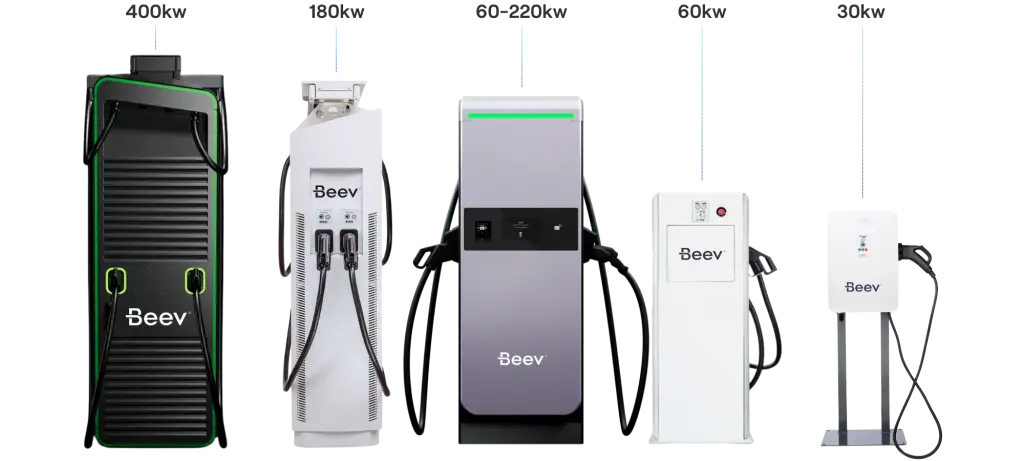
How much power do you need?
The choice of power depends on the number of vehicles to be charged simultaneously, their use and the average parking time. For a typical healthcare establishment, we recommend a combination of solutions:
- AC terminals 7.4 to 22 kW for the daily needs of staff and visitors.
- DC 50 kW terminals and more for fleet vehicles, ambulances and emergency situations where every minute counts.
Supervision and access management solutions
For a healthcare establishment, the choice of recharging points is about more than just supplying electricity: it's also about management, safety and operational efficiency. Visit supervision and the access management are essential criteria to ensure optimum use, controlling costs and meet the confidentiality and security requirements specific to the medical sector.
Why are supervision and access management crucial?
→ Centralised, secure management Healthcare establishments have a large number of vehicles (internal fleet, visitors, staff). Supervision enables the status of the terminals to be monitored in real time, malfunctions to be identified and availability to be optimised, while limiting access to authorised persons only.
→ Optimising costs and energy Supervision: Thanks to supervision, it is possible to monitor consumption, generate detailed reports and adjust the recharging policy according to actual needs. This makes it possible to reduce energy costs, a major challenge at a time when the cost of electricity has risen by more than 50 % in France since 2021.
→ Traceability and compliance Access management: At a time when data security and traceability of usage are paramount, particularly for establishments subject to strict standards, access management makes it possible to identify exactly who is recharging, when and at which terminal.
Examples of terminals adapted to supervision and access management available from Beev
In the catalogue of charging points at BeevA number of terminals are perfectly suited to the requirements of healthcare establishments:

Wallbox Pulsar Pro This charging point, which is very popular with fleet managers, offers advanced supervision via a dedicated platform, enabling remote control of access to and use of each charging point. It also includes options for managing users by RFID badge or mobile application, ideal for differentiating between staff, visitors and fleet services.
Alfen Eve Double Pro Line Designed for demanding professional environments, this terminal features a dual socket and intelligent access management. It allows user rights to be configured according to profile (medical staff, visitors, ambulances), while offering a supervision interface for monitoring consumption and the status of the terminals in real time.
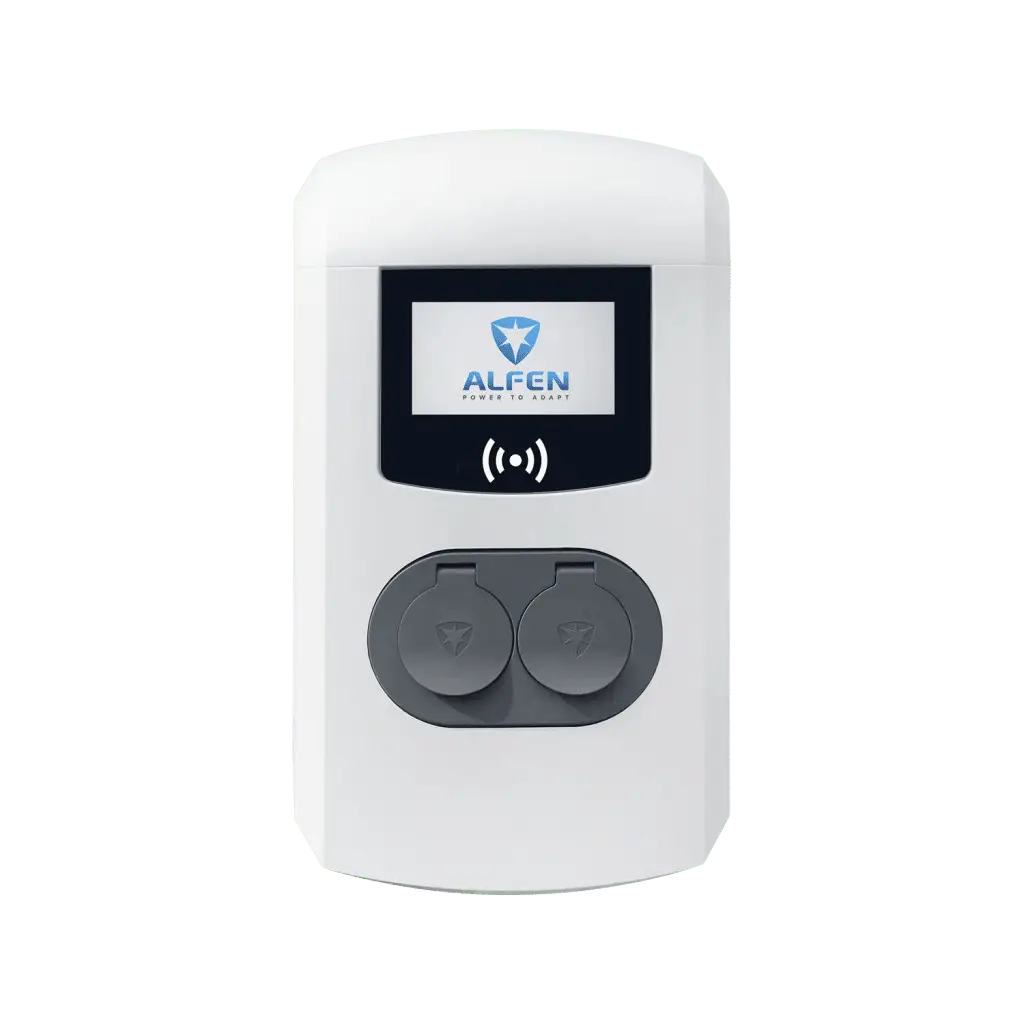

Wallbox Copper SB This bollard combines robustness and flexibility, with RFID card access management and compatibility with the main supervision systems on the market. It is perfectly suited to hospital or clinic car parks, where security and traceability are essential.
Ohme ePod S The system is equipped with a connected interface for remote management and precise supervision, with options for restricting access according to the needs of the establishment.
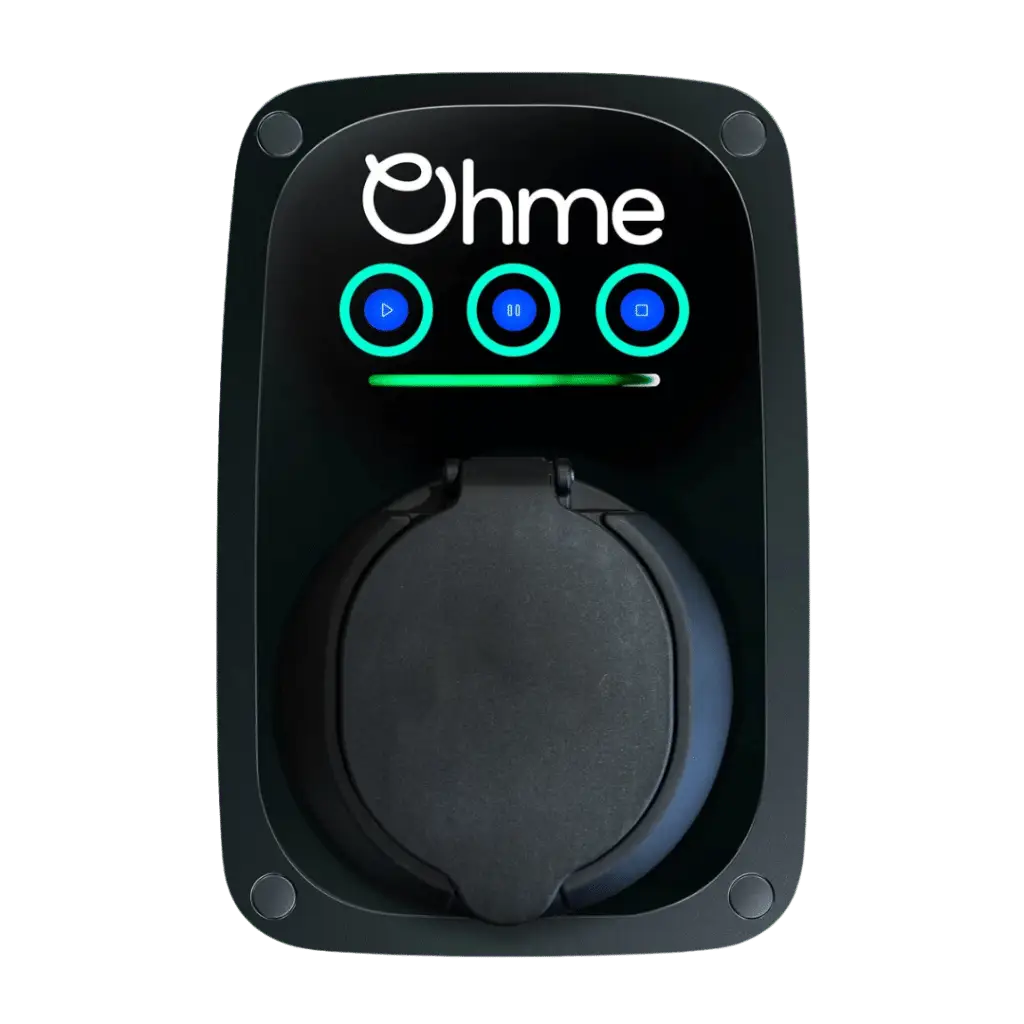
To guarantee a reliable, secure recharging service that meets the expectations of staff and users alike, it is essential to choose charging points that incorporate :
- A fine-tuned access management (badges, applications, user profiles)
- A centralised supervision system (dashboard, alerts, reports)
- A compatibility with safety standards and confidentiality in the medical sector
Worth noting Don't forget that The choice of bollard must be based on the volume of vehicles.and uses (fleet, visitors, emergencies) and thefuture development of your fleet.
What funding and subsidies are available to equip a healthcare establishment?
Local and regional subsidies depending on your geographical area
In fact, some French regions stand out for their particularly attractive incentives for installing charging points in professional establishments, including healthcare facilities:
- Eastern France and Normandy These regions offer grants covering up to 50% of installation costs, with ceilings ranging from €1,000 to €3,000 per charging point. This aid can considerably reduce the initial investment, particularly for hospitals or clinics with several charging points to deploy.
- Other regions : Many local authorities offer specific support in the form of direct grants, tax credits or even exemption from local taxes. It is essential to consult the regional or departmental schemes, as the amounts and conditions vary greatly from one area to another.
Possibility of renting terminals from Beev to preserve cash flow
For a hospital, clinic or nursing home, investing in recharging stations can be an obstacle, especially in a context where cash management is a daily challenge. Visit hire of recharging pointsproposed by Beevoffers a a flexible, cost-effective alternative to equip your establishment without tying up large amounts of capital.
See also our article :
There are many practical advantages to renting. Firstly, renting your bollards allows you to spread the cost over several yearsover 36, 48 or 60 months, with fixed, predictable monthly instalments. This approach frees up financial resources that can be devoted to other strategic health-related projects. In addition, the rental adapts to changes in your fleet or your needs If your fleet of electric vehicles grows, you can add more charging points or upgrade your contract without any major constraints.
Beev offers a turnkey supportwhich takes care of the entire process, from the initial audit to installation by qualified personnel. IRVE-approved techniciansnot to mention maintenance and thetechnical assistance. A single point of contact will follow you every step of the way to simplify the management of your project.
At the same time Beev teams can help you access available grantssuch as regional aid, even when renting. These devices significantly reduce the overall cost of your recharging solution.
Finally, long-term leasing (LLD) or with a purchase option (LOA) offers genuine budgetary peace of mind, allowing you to control expenditure while avoiding unpleasant surprises linked to obsolescence or maintenance costs.
Conclusion
Installing recharging points for healthcare establishments means offer your patients a modern service they expect, visitors and employeesIt's all part of a responsible, innovative approach. In this article, you will have discovered that the installation of recharging points represents a major step forward in terms of energy efficiency. a fantastic opportunity to optimise your fleet managementof promote your commitment to the environment andaccess new financing or certification. The legal obligationsthe accessibility requirements or the financing and leasing options are all levers to be activated to make your project a success under the best possible conditions.
Faced with these challenges, Beev is positioning itself as the a trusted partner to support healthcare establishments at every stageFrom the initial audit to the supervision of the terminals, including the preparation of subsidy applications and the management of your infrastructure as it evolves.
Thanks to its expertise and its made-to-measure solutionsBeev can help you take the next step towards sustainable mobility, while preserving your cash flow and guaranteeing that your installations are compliant.
